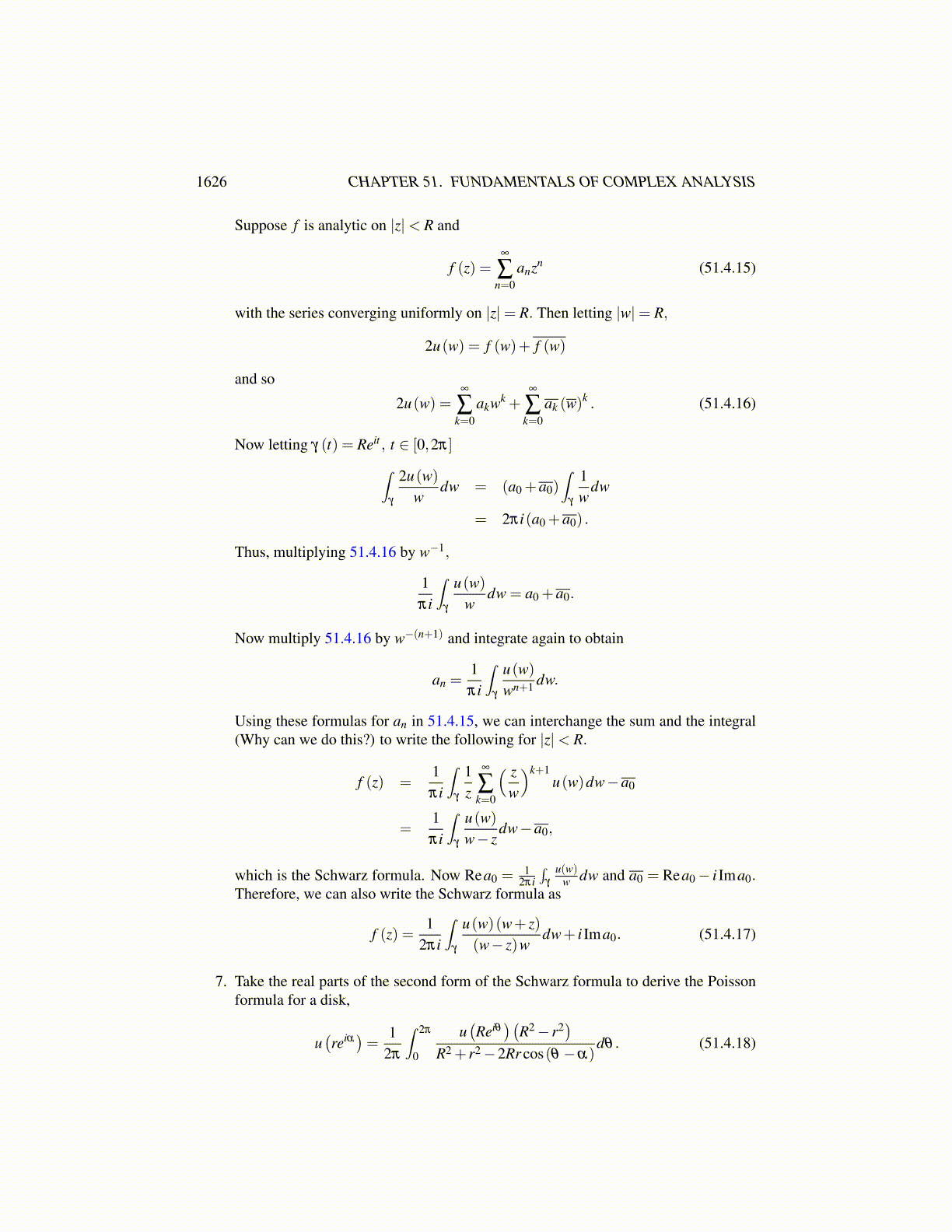
1626 CHAPTER 51. FUNDAMENTALS OF COMPLEX ANALYSIS
Theorem 51.3.15 If f : Ω→ X is analytic and if B(z0,r)⊆Ω, then
f (z) =∞
∑n=0
an (z− z0)n (51.3.13)
for all |z− z0|< r. Furthermore,
an =f (n) (z0)
n!. (51.3.14)
Proof: Consider |z− z0|< r and let γ (t)= z0+reit , t ∈ [0,2π] . Then for w∈ γ ([0,2π]) ,∣∣∣∣ z− z0
w− z0
∣∣∣∣< 1
and so, by the Cauchy integral formula,
f (z) =1
2πi
∫γ
f (w)w− z
dw
=1
2πi
∫γ
f (w)
(w− z0)(
1− z−z0w−z0
)dw
=1
2πi
∫γ
f (w)(w− z0)
∞
∑n=0
(z− z0
w− z0
)n
dw.
Since the series converges uniformly, you can interchange the integral and the sum to obtain
f (z) =∞
∑n=0
(1
2πi
∫γ
f (w)
(w− z0)n+1
)(z− z0)
n
≡∞
∑n=0
an (z− z0)n
By Theorem 51.3.11, 51.3.14 holds.Note that this also implies that if a function is analytic on an open set, then all of its
derivatives are also analytic. This follows from Theorem 51.1.4 which says that a functiongiven by a power series has all derivatives on the disk of convergence.
51.4 Exercises1. Show that if |ek| ≤ ε, then
∣∣∑∞k=m ek
(rk− rk+1
)∣∣< ε if 0≤ r < 1. Hint: Let |θ |= 1and verify that
θ
∞
∑k=m
ek
(rk− rk+1
)=
∣∣∣∣∣ ∞
∑k=m
ek
(rk− rk+1
)∣∣∣∣∣= ∞
∑k=m
Re(θek)(
rk− rk+1)
where −ε < Re(θek)< ε.